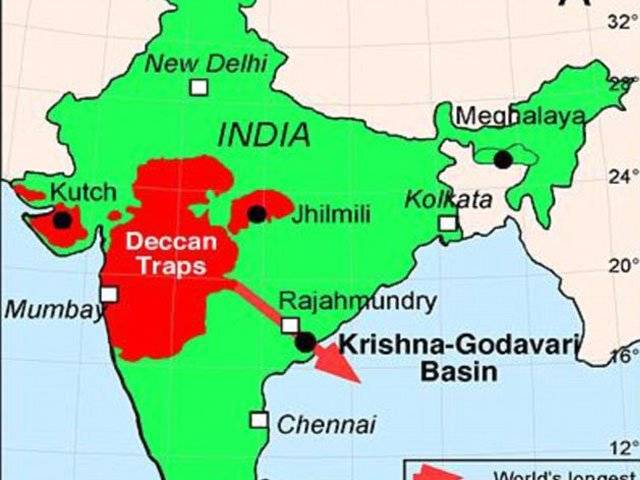A COSMIC one-two punch of colossal volcanic eruptions and meteorite strikes likely caused the mass-extinction event at the end of the Cretaceous period that is famous for killing the dinosaurs 65 million years ago, according to two Princeton University reports that reject the prevailing theory that the extinction was caused by a single large meteorite. Princeton-led researchers found that a trail of dead plankton spanning half a million years provides a timeline that links the mass extinction to large-scale eruptions of the Deccan Traps, a primeval volcanic range in western India that was once three-times larger than France. A second Princeton-based group uncovered traces of a meteorite close to the Deccan Traps that may have been one of a series to strike the Earth around the time of the mass extinction, possibly wiping out the few species that remained after thousands of years of volcanic activity. NP Researchers led by Princeton Professor of Geosciences Gerta Keller report this month in the Journal of the Geological Society of India that marine sediments from Deccan lava flows show that the population of a plankton species widely used to gauge the fallout of prehistoric catastrophes plummeted nearly 100 percent in the thousands of years leading up to the mass extinction. This eradication occurred in sync with the largest eruption phase of the Deccan Traps - the second of three - when the volcanoes pumped the atmosphere full of climate-altering carbon dioxide and sulfur dioxide, the researchers report. The less severe third phase of Deccan activity kept the Earth nearly uninhabitable for the next 500,000 years, the researchers report. A substantially weaker first phase occurred roughly 2.5 million years before the second-phase eruptions. NP
Friday, April 19, 2024
Dinosaurs wiped out by colossal volcanic eruptions, meteorites

Opposition objects to oath-taking of MNAs amid lawlessness
5:15 PM | April 19, 2024
Electioneering to end on Friday night ahead of by-polls in 21 constituencies
5:14 PM | April 19, 2024
Fawad Chaudhry granted bail in 14 cases related to May 9 violence
5:13 PM | April 19, 2024
British Army chief lauds Pakistan Army's professionalism, expertise
5:12 PM | April 19, 2024
Israeli aircraft fire missiles at Air Force assets in Iran: Report
3:52 PM | April 19, 2024
A Tense Neighbourhood
April 19, 2024
Dubai Underwater
April 19, 2024
X Debate Continues
April 19, 2024
Hepatitis Challenge
April 18, 2024
IMF Predictions
April 18, 2024
Kite tragedy
April 19, 2024
Discipline dilemma
April 19, 2024
Urgent plea
April 19, 2024
Justice denied
April 18, 2024
AI dilemmas unveiled
April 18, 2024
ePaper - Nawaiwaqt
Advertisement
Nawaiwaqt Group | Copyright © 2024





